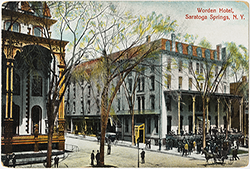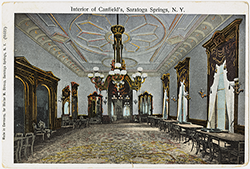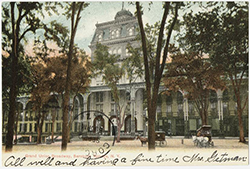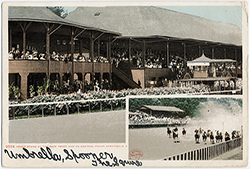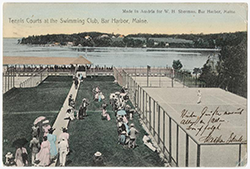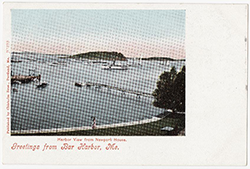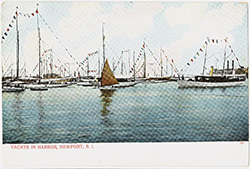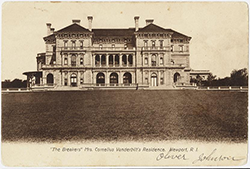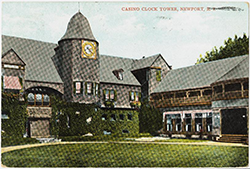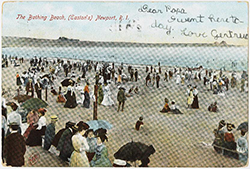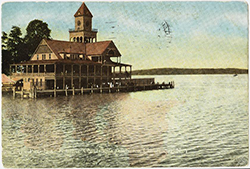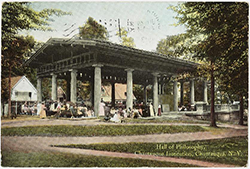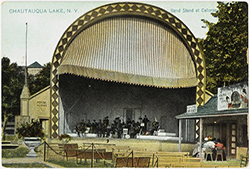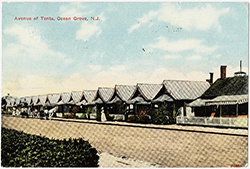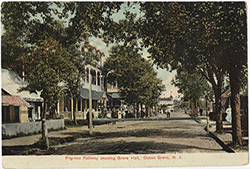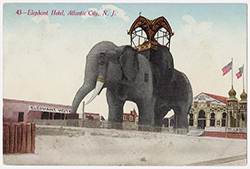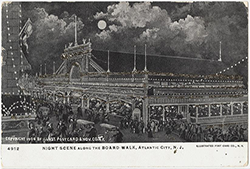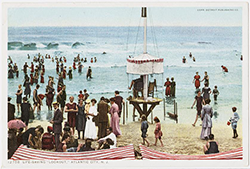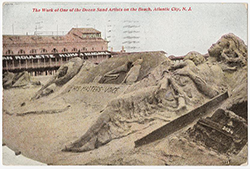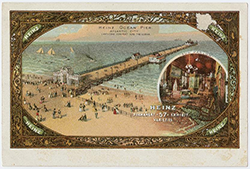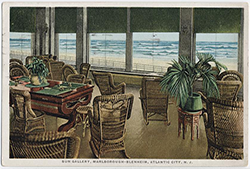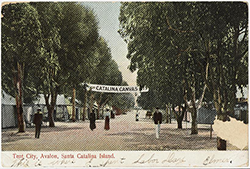Resorts: Home Away From Home
Early postcards offer ample evidence that the number and variety of resorts in the United States grew dramatically at the turn of the twentieth century. Resorts provided opportunities for multi-day amusement in naturally healthful settings, whether seaside, lakeside or in the mountains. For prosperous visitors, the most fashionable resorts offered a variety of social and recreational opportunities: strolls down lovers' lanes, sports, musical performances, and gambling. Other resorts were designed to provide similar activities for middle-class guests, who strove to replicate the manners of their wealthier counterparts.
Self-improvement resorts aimed to improve each visitor's intellectual, physical and spiritual well-being, through educational and religious lectures, and salubrious outdoor activities. As with other travel destinations, postcards showing resorts offered a window into a world beyond the realm of everyday experience. Just as day trippers could gawk at the playgrounds of the wealthy by visiting Newport, postcard collectors expanded their horizons and gained at least a small taste of life at a resort.
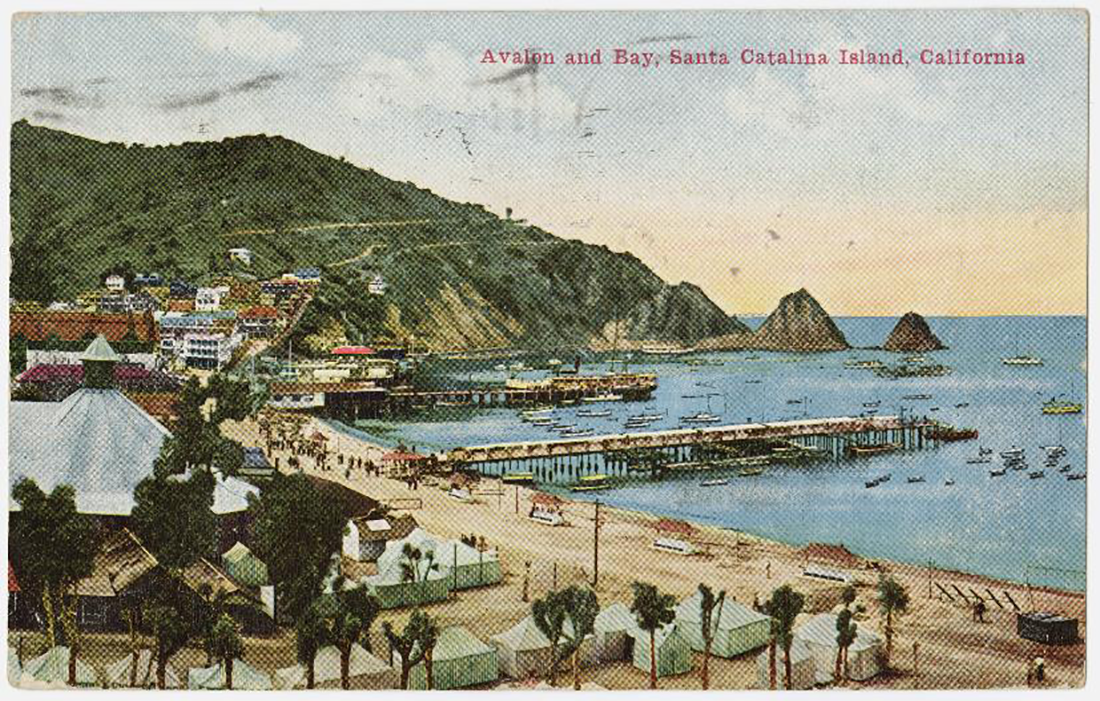
"We are having a fine time. Can you find us in the crowd?"
- 1907 -
Fashionable Resorts
Saratoga Springs, New York
Although New York's Saratoga Springs first attracted nineteenth-century visitors with its healing mineral springs, by the turn of the century the resort was best known for its horse races and fashionable crowds. People would come from far and wide to see and be seen with the upper crust on Broadway, the resort's most prominent thoroughfare. A New York Times article from July of 1903 echoes this change:
"The regular patrons appreciate to the utmost degree the rejuvenating and invigorating effects of the many wonderful mineral fountains that bubble to the surface at the highly favored Adirondack foothill abode of good cheer and bright life... But a large majority of Saratoga's visitors are far from being health seekers. In the language of one: 'I come to Saratoga because I see here, during the season, everybody from everywhere.'"
Bar Harbor, Maine
Bar Harbor, Maine, rivaled Newport for its opulence. The resort, popular with active vacationers, was known for its outdoor sports facilities (Kebo Valley Golf Club, Tennis Courts at the Swimming Club).
Tennis courts at the Swimming Club
Harbor view from Newport House
Newport, Rhode Island
Some of the wealthiest people in turn-of-the-century America built their summer residences in Newport, Rhode Island. Ordinary Americans, curious to see how the other half lived, trekked to Newport to catch a glimpse of celebrities at play. Resort vacations often provided more privacy and anonymity than Americans were used to at home, allowing visitors to test the bounds of social conventions. Women found that many resorts offered freedom from the tight social constraints of Victorian society. At resorts they might introduce themselves to young men without a chaperone’s supervision, or take unsupervised strolls with partners down lovers' lanes.
E. D. Morgan's Residence
Yachts in harbor
"The Breakers"
Casino clock tower
Bathing beach
Self-Improvement Resorts
Chautauqua, New York
Products of middle-class reform movements, summer camps thrived at the turn of the twentieth century. The Chautauqua Institution was the first and most prominent of these, and modeled itself on four pillars: arts, education, religion and recreation.
The pier at the Chautauqua Institution
Hall of Philosophy
Band stand at Celoron
Ocean Grove, New Jersey
Early postcards offer ample evidence that the number and variety of resorts in the United States grew dramatically at the turn of the twentieth century. Ocean Grove, a Methodist resort, focused specifically on religious edification.
Avenue of Tents
Pilgrims Pathway showing Grove Hall
Resorts Within Reach
Atlantic City, New Jersey
Elephant Hotel
Atlantic City boardwalk at night
The beach, Atlantic City
Sand art, Atlantic City
Heinz Ocean Pier
Marlborough-Blenheim Hotel
Catalina Island, California
Resorts such as New Jersey's Atlantic City and California's Catalina Island provided amusements similar to those offered by upper-class resorts, but at more affordable costs. Atlantic City's Boardwalk provided a venue for seeing and being seen, and its hotels mirrored the refined spaces provided by wealthier resort hotels. Catalina Island offered both hotel and tent lodging to accommodate the socioeconomic range of its visitors.
Tent City, Avalon


